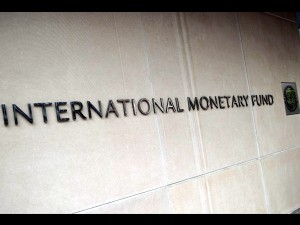The Philippines remains one of the few bright spots in the global economy, with domestic demand fueled by remittances from migrant workers and increased government spending expected to offset the slowdown in the developed world.
The International Monetary Fund (IMF) on Wednesday announced that it now sees the Philippine economy growing by 7 percent, better than the previous forecast of 6 percent.
The new forecast is in line with the top end of the government’s own target range of 6-7 percent for gross domestic product (GDP) growth for the year. The better outlook for the Philippines was announced following the release of new forecasts for the global economy and other Southeast Asian markets, which are now all expected to grow at a slower pace.
“The Philippines is really the outlier,” said Shanaka Peiris, IMF’s resident representative for the country.
In a briefing with reporters, Peiris noted that the Philippine economy relied heavily on domestic demand rather than export revenues that fuel the economies of neighbors like Malaysia, Thailand and Singapore. This showed that the country was one of the few emerging markets that could “better cope” with current global economic conditions.
In 2014, the forecast was also raised to a growth of 6 percent from the previous 5.5 percent.
“The Philippines has more growth momentum than the rest of the world,” Peiris said, citing the recent increase in government spending in the first half of the year.
Remittances from overseas Filipino workers (OFWs), which the IMF expects to grow by 5 percent this year, also remain stable, fueling domestic demand.
OFW remittances are expected to reach $22.5 billion this year. Remittances from the country’s 10 million migrant workers are the Philippines’ biggest source of foreign exchange, which protects the economy from any sudden shortage of cash from overseas.
In the latest update to its World Economic Outlook (WEO), the IMF said the global economy would grow by just 3.1 percent in 2013 and 3.8 percent in 2014, from the previous 3.3 percent and 4 percent.
The growth forecast for the Association of Southeast Asian Nations (Asean)-5 cluster—made up of Indonesia, Malaysia, Philippines, Thailand and Vietnam—was also reduced to 5.6 percent and 5.7 percent in 2013 and 2014, respectively. The previous forecast saw the region growing 5.9 percent and 5.5 percent for 2013 and 2014.
The lower forecast for the global economy and emerging markets was a result of “appreciably weaker domestic demand and slower growth in several key emerging market economies, as well as a more protracted recession in the euro area.”


